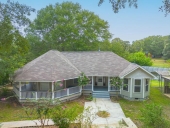
 2
2




https://www.youtube.com/user/callmeburton
https://www.facebook.com/projectanavita/

 8
8




Works at a residential alternative high school in the Himalayas SECMOL.org . "Back home" is Cape Cod, E Coast USA.

 5
5




 2
2








Blog: 5 Acres & A Dream
Books: Kikobian Books | Permies Digital Market
 6
6








 2
2




Life on a farm is a school of patience; you can't hurry the crops or make an ox in two days.
Henri Alain
 3
3








JayGee




JayGee
 1
1




 1
1




 2
2




John Daley Bendigo, Australia The Enemy of progress is the hope of a perfect plan
Benefits of rainfall collection https://permies.com/t/88043/benefits-rainfall-collection
GOOD DEBT/ BAD DEBT https://permies.com/t/179218/mortgages-good-debt-bad-debt
 2
2





 1
1




Brittany Dixon wrote:I’ve lived in a double envelope home since 2015 and love it. We are looking to finish off another portion of the basement which is currently linked to the solarium and outer walls of the basement. Any suggestions on insulation and heating methods? Thinking we will need to not make any additional door ways or leave a draft between the hallway, but open to suggestions there too.
 If you look at the bottom of the page, there are links to similar posts. There may be something useful there. Looking forward to seeing how your project progresses.
If you look at the bottom of the page, there are links to similar posts. There may be something useful there. Looking forward to seeing how your project progresses.
Failure is a sign of activity and learning. It had nothing to do with under achievement
I never want to have a team member who has never failed - They are not doing!! 👍












https://www.youtube.com/user/callmeburton
https://www.facebook.com/projectanavita/
 1
1




 1
1




Geothermal heating for dhw
John Daley Bendigo, Australia The Enemy of progress is the hope of a perfect plan
Benefits of rainfall collection https://permies.com/t/88043/benefits-rainfall-collection
GOOD DEBT/ BAD DEBT https://permies.com/t/179218/mortgages-good-debt-bad-debt




Burton Rosenberger wrote:UPDATE:
Its been a while, but we did find someone who was living in a poorly designed double envelope home (aka not modern with concerns addressed) ...
I spent a good week tweaking the WUFI models to see if we could reproduce the 2 years of data we were provided. I modeled their home and then would modify the assemblies and settings till I got what matched reality. In short, WUFI isn't capable of modeling these homes. The only thing I could do to make the numbers match up was to switch to a single envelop and make the walls R90 ... this on a building with exterior R19 walls. There were many methods I tried to model it correctly but nothing worked in away where I would be confident in "selling" the results if you will.
So we took our structure, modeled it in wufi, and ran it through as a single envelope home ... came out with equivalent 2.5 coords of wood a year required to do DHW + heating. So while we are leaving space in our floor plan for a future double envelope if required we are going to go forward with a hybrid design. We did install two massive earth tubes on either side of the building along with two internal tubes (TBZ tubes) to connect them in place of a crawlspace.
In version 1, (see attachment) on the west side of the building, the earth tubes will come into the sun room and the sun room will be used for the replacement air for the home. The sunroom here is smaller than the other side of the building. I believe it was like 22x8 and will also act as an airlock into the main part of the home. On the east side the sun room is much bigger. Its an odd shape though ... 33x30 with a garage cut out of that space at 17x20. It will be a sun room as well and also hold a sonnenhaus style drain back tank to act as a thermal mass for our recycled evacuated solar tubes with wood stove backup ... it will be used for DHW and HRH ... but I suspect with the HRH we will likely be running it in a closed loop given all the sun coming into the space.
This is going to be a multi unit place so it should be interesting to see how it works out. At the end of 2021 we had the site leveled, tubes in, all underground conduit in, FPSF* modified commercial scaled footers for the steel building in, and the ICF wall placed on top said footers. Later this year we are going to do the slab and start erecting the building if we can.
 2
2




John C Daley wrote:
Geothermal heating for dhw
What is dhw please? thought bubble- domestic hot water?
You have been a busy person!
The improvements are impressive and you need to be complemented for going ahead with them.
When you want to think about collecting rainwater, look at the link in my signature, you may find it helpful
 1
1





|
Does this tiny ad make my butt look fat?
Play Your Way to a Sustainable Lifestyle: Uncover Permaculture Principles with Each Card
https://gardener-gift.com/
|





